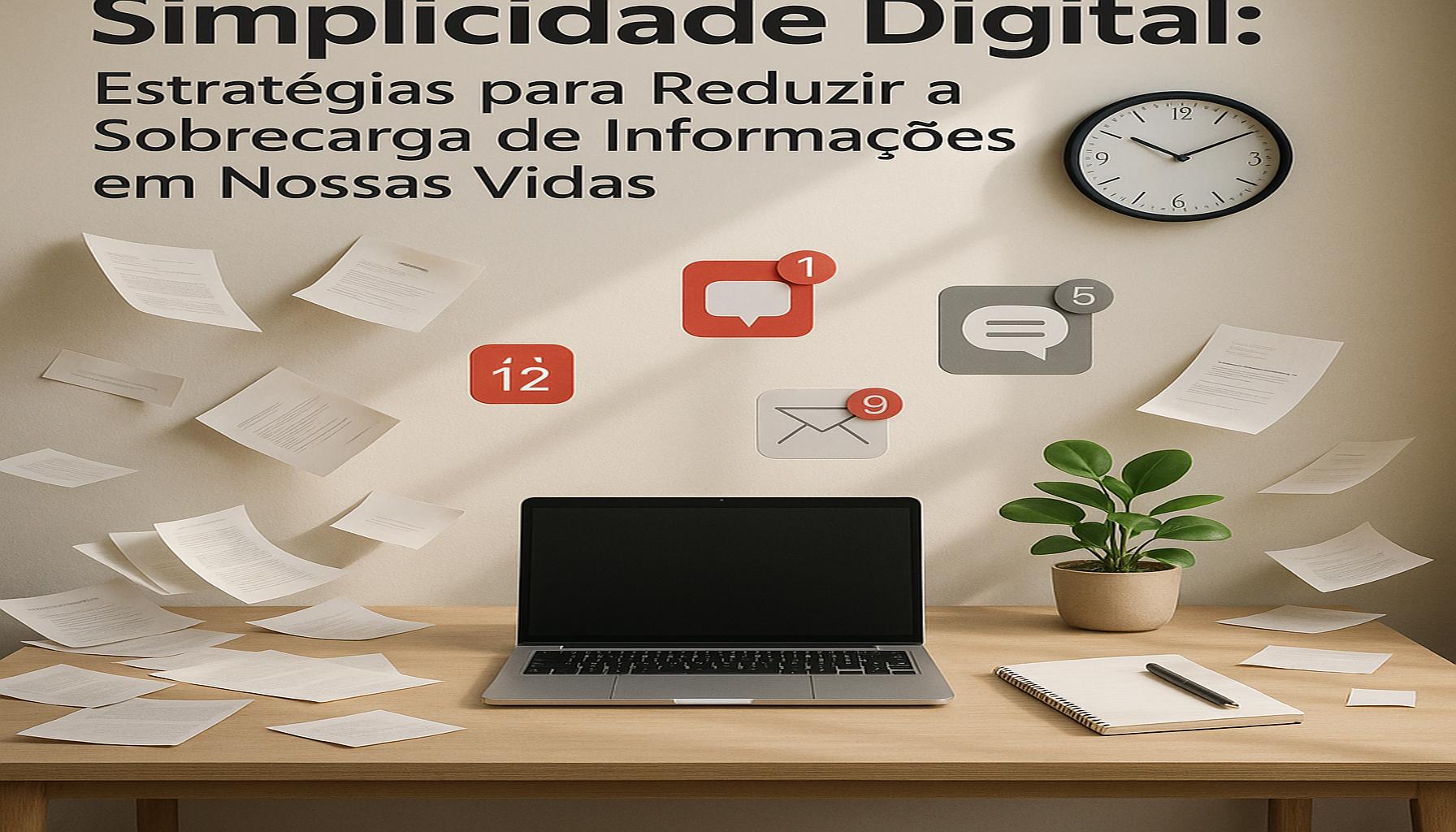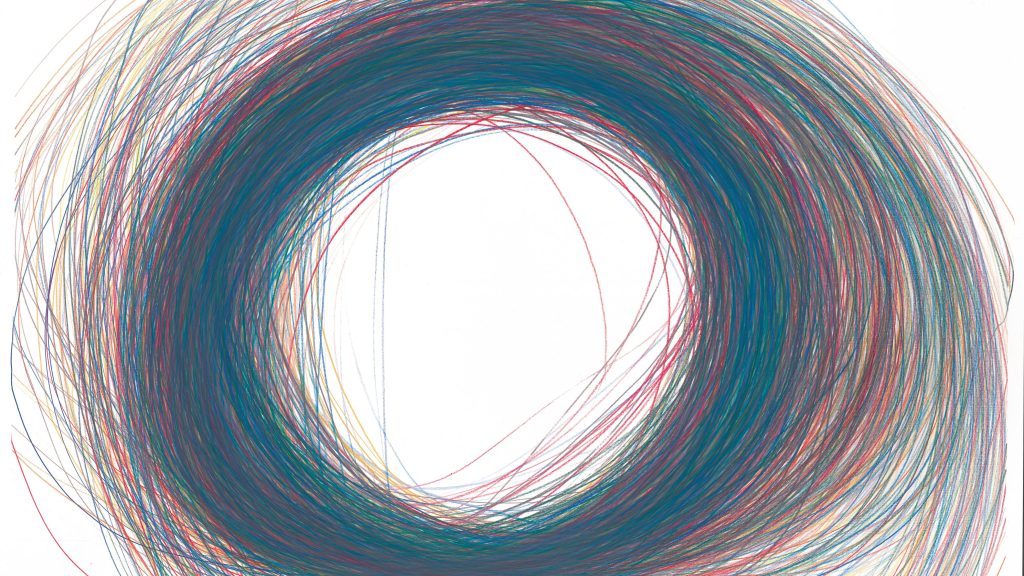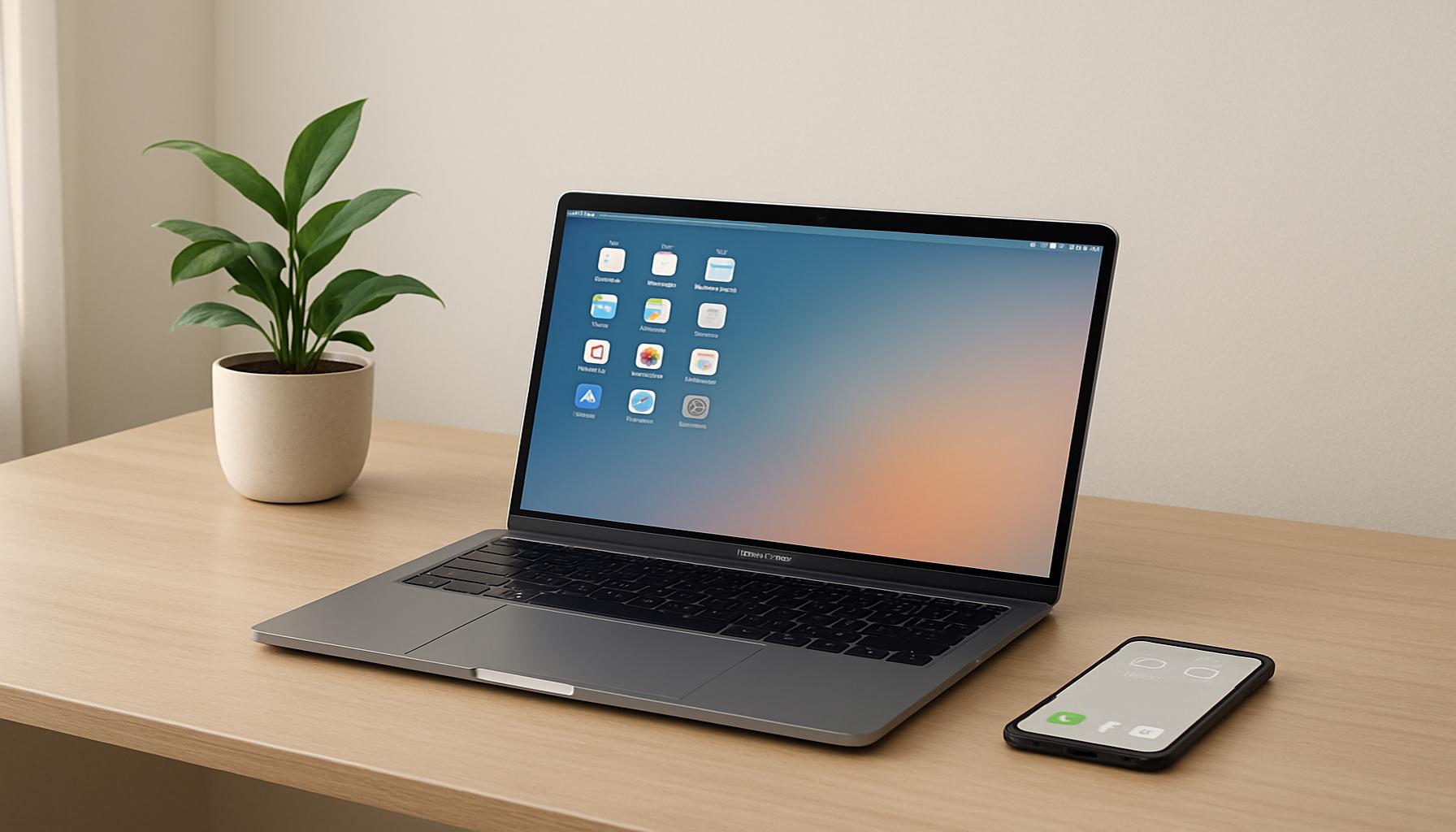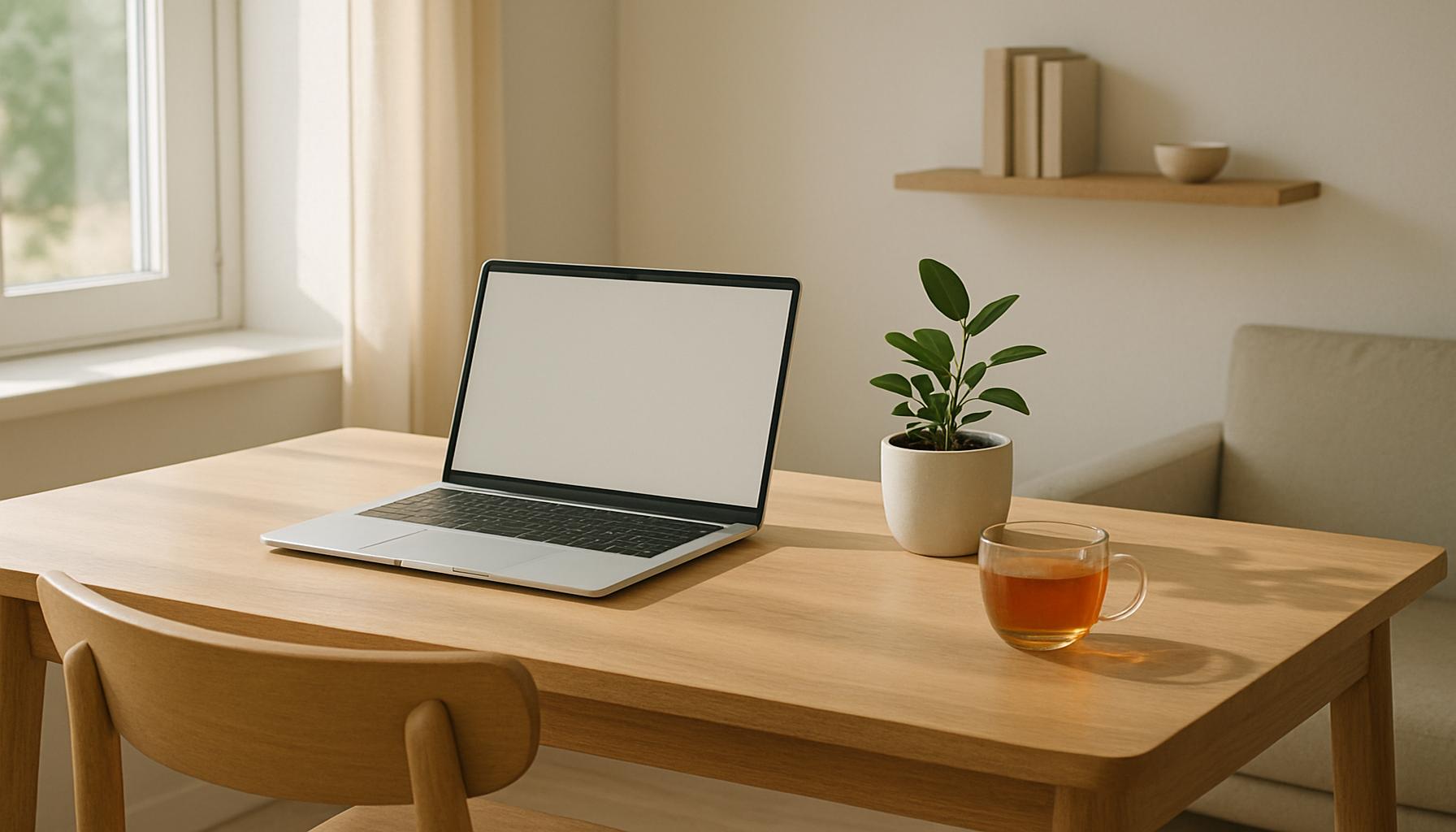Digital Simplicity: Strategies to Reduce Information Overload in Our Lives

The Impact of Information Overload
In the era of smartphones, tablets, and perpetual internet connectivity, navigating through the vast sea of information has become a daunting task. Digital platforms, news websites, and social media channels bombard users with a deluge of data that can be difficult to process. The phenomenon of information overload is not just a casual annoyance; it can have significant consequences for our mental health and overall productivity. Studies have shown that too much information can lead to heightened stress levels, indecision, and a marked decrease in our ability to concentrate.
In an age where 63% of Americans report feeling overwhelmed by the amount of information they receive, it’s critical to establish strategies to combat this digital chaos. The allure of constant connectivity often leaves individuals scrolling endlessly, leading to a phenomenon known as decision paralysis, where the abundance of choices causes one to feel stuck and unable to make any decision at all. This situation underscores the importance of achieving digital simplicity to enhance both mental clarity and productivity.
Strategies for Digital Simplicity
To help disentangle oneself from the webs of digital complexity, consider implementing the following strategies:
- Curate your content: Focus on selecting sources and feeds that genuinely enrich your life or work. For instance, if you are passionate about environmental issues, consider following a limited number of reliable news outlets or community groups. This targeted approach can significantly reduce the noise from irrelevant content.
- Limit notifications: Take control of your digital environment by silencing unnecessary notifications. Research indicates that our productivity can improve by up to 40% when we minimize distractions. Assess which alerts are essential—perhaps only allowing notifications from family, close friends, or critical work updates.
- Set time limits: Allocate specific periods during your day for consuming information, similar to setting aside time for regular meals. Designating a mere 30 minutes in the morning and evening for news or social media can reduce anxiety around staying informed while preventing aimless scrolling throughout the day.
- Embrace minimalism: Take stock of your digital life by clearing out unused apps and subscriptions. Not only does this decluttering free up valuable space on your devices, but it also fosters a more focused mindset. For instance, if you find that a streaming service is collecting dust, consider canceling the subscription and replacing it with an engaging book or hobby that adds value to your downtime.
By honing in on what truly matters to you, it’s possible to reclaim your time and mental space. The journey toward digital tranquility enhances personal well-being and allows for greater focus in both work and personal pursuits. In a world that often feels overwhelmingly connected, these strategies can provide a pathway to a less chaotic and more fulfilling digital existence.
Join us as we delve deeper into effective ways to achieve digital simplicity and counteract the turbulence of living in a hyper-connected society. Let’s explore how we can take back control, ensuring that technology serves as a tool for empowerment rather than a source of stress.

DISCOVER MORE: Click here to learn how to streamline your digital life
Navigating the Digital Wilderness
In our fast-paced digital landscape, where information flows at lightning speed, the act of sifting through endless streams of content can feel like traversing through a dense forest without a clear path. The challenge of information overload is compounded by the sheer volume of data, with estimates suggesting that the average person encounters around 74 gigabytes of information every day. This staggering amount can lead to cognitive fatigue, diminishing our ability to focus and make decisions. As a result, adopting techniques to cultivate digital simplicity is crucial for maintaining mental clarity.
Prioritizing Quality Over Quantity
One of the cornerstones of achieving digital simplicity lies in prioritizing quality over quantity. As we engage with various platforms—be it social media, news articles, or email newsletters—it’s essential to ask ourselves: does this content truly add value to my life? By curating content that aligns with our interests, we can create a more enriching digital environment. Research from the Pew Research Center reveals that 64% of respondents prefer tailored content that meets their preferences, rather than being drowned in a sea of information. This indicates a collective yearning for focused engagement that avoids cognitive overload.
Mindful Consumption Practices
Embracing mindful consumption can be a game changer in the fight against information overload. Consider adopting practices such as:
- Digital Detox Weekends: Designate weekends as tech-free zones, reserving these days for offline activities like reading, hiking, or spending time with loved ones. This practice not only reduces information intake but promotes deeper connections in the real world.
- Weekly Content Reviews: Set aside time each week to review the content you’ve engaged with. Identify which sources served you well and which ones felt burdensome. This reflection can help streamline your digital diet moving forward.
- Mind Mapping: When faced with a wealth of information on a topic, consider creating a mind map to visualize connections and key points. This method can enhance comprehension and memory retention, allowing for better processing of information.
As we implement these mindful practices, it becomes evident that fostering digital simplicity is not merely about consuming less, but rather consuming smarter. The ability to control what enters our mental space can lead to enhanced productivity and a greater sense of well-being. Through these strategic changes, individuals can reclaim their time and attention, moving toward a more fulfilling digital life.
As we continue to explore the art of digital simplicity, join us in uncovering innovative techniques that empower us to reshape our relationship with technology, ensuring it serves as a source of inspiration rather than an overwhelming flood of distraction.
As we continue to navigate the complexities of the digital age, strategies for reducing information overload have become increasingly essential. The challenge lies in effectively managing the deluge of information that bombards us daily—from emails and social media alerts to constant news updates. A proactive approach to digital simplicity can aid not just in improving our mental well-being but also in fostering enhanced productivity.
A key strategy is establishing clear digital boundaries. By dedicating specific time slots for checking emails or social media, individuals can train their brains to focus on more critical tasks. This practice combats the constant urge to multitask, which often leads to decreased efficiency and heightened stress levels.
Furthermore, adopting tools designed for information curation can streamline the process of gathering and processing what truly matters. Applications that filter content based on user preferences reduce noise and enable users to concentrate on relevant, high-quality information. The utilization of such tools can create an environment where information serves us rather than overwhelms us.
Another important strategy is the practice of digital minimalism. This approach encourages users to evaluate their digital lives critically, keeping only the applications and platforms that align with personal goals and values. By reducing the number of digital distractions, individuals can find greater focus and satisfaction in their online and offline activities.
Creating spaces that prioritize simplicity, both digitally and physically, facilitates a healthier interaction with technology. Regular detoxing from digital devices—the practice of taking breaks from screens—offers additional benefits, allowing the mind a chance to reset.
| Category 1 | Category 2 |
|---|---|
| Digital Boundaries | Setting specific times for tech usage to enhance focus. |
| Information Curation | Tools that prioritize relevant information help reduce clutter. |
| Digital Minimalism | Keeping only essential apps and platforms for a clearer focus. |
By embracing these strategies and utilizing available tools, one can significantly reduce the chaos of information overload. Engaging in this journey of digital simplicity can lead to a more fulfilling life, allowing individuals to fully enjoy and engage with the world around them.
DISCOVER MORE: Click here for minimalist organization tips
Streamlining Digital Engagement
In a world dominated by rapid technological advancements and perpetual connectivity, the challenge of information overload transcends personal management and seeps into the very fabric of our social and work lives. To combat this deluge, streamlining our digital engagement is essential. This involves not only how we consume information but also how we interact with various digital platforms. Effective digital management strategies can help mitigate distractions while enhancing productivity and overall happiness.
Optimizing Notifications and Alerts
One practical way to reduce distractions is by optimizing notifications and alerts. Studies indicate that the average person checks their phone over 100 times a day, with notifications playing a significant role in this behavior. By customizing app notifications to only alert us about critical information, we can drastically cut down on interruptions throughout the day. For instance, consider limiting notifications from social media platforms or setting specific times for checking emails. A survey from the American Psychological Association shows that individuals who manage notifications experience 35% less stress and enjoy enhanced focus compared to those who do not.
Embracing Content Aggregation
Another strategy worth incorporating is the use of content aggregation tools. These digital resources allow users to consolidate information from various websites, blogs, and social media sources into a single feed, creating a curated experience tailored to personal interests. Popular platforms such as Feedly or Flipboard enable users to follow specific topics without needing to sift through endless content from different sources. This not only saves time but also aids in filtering out noise, allowing users to engage more meaningfully with the information that matters most to them.
The Power of Minimalism in Digital Space
The principle of minimalism isn’t just a design aesthetic—it extends to our digital lives as well. Embracing a minimalist digital lifestyle involves decluttering one’s virtual space, from emptying out irrelevant apps and files to organizing folders on our devices. Research has shown that a cluttered digital environment can overwhelm users, impeding their ability to think clearly and work effectively. Implementing file-naming conventions and dedicating specific days for digital housekeeping can lead to clearer digital spaces and foster enhanced productivity. The elimination of digital clutter allows for a more focused approach to information and enhances our capacity to retain essential knowledge.
Utilizing Mindfulness Techniques
Mindfulness is another powerful ally against information overload. Mindfulness techniques, such as breathing exercises or short meditative breaks, can help re-center our focus when faced with overwhelming information. For example, the practice of a mere five minutes of mindfulness or deep breathing significantly improves concentration and cognitive performance according to a study from the University of Washington. Incorporating short breaks into our digital routines enables rejuvenation, ultimately enhancing our ability to engage with and retain the information we choose to consume.
Through these methods of optimizing notification settings, embracing content aggregation, and practicing minimalism and mindfulness, individuals can cultivate a more balanced digital life. Each strategy contributes to a comprehensive approach, underscoring the importance of intentional engagement with technology. By understanding the pathways to digital simplicity, we can reclaim our time and protect our mental well-being from the pervasive threat of information overload.
DISCOVER MORE: Click here to simplify your space
Conclusion: Embracing Digital Simplicity for a Healthier Future
In conclusion, adopting the principles of digital simplicity serves as a proactive response to the escalating phenomenon of information overload. As we navigate through an information-saturated environment, it is vital to implement effective strategies that streamline our digital experiences. Emphasizing practices such as optimizing notifications, leveraging content aggregation tools, embracing minimalism, and incorporating mindfulness techniques can empower us to reclaim control over our digital engagements.
Research indicates that individuals who actively manage their digital interactions report lower stress levels and heightened productivity. By strategically curating the information we consume and minimizing distractions, we not only enhance focus but also create mental space for creativity and meaningful engagement. Furthermore, the practice of digital minimalism ensures our virtual environments remain conducive to clearer thinking and better decision-making.
Ultimately, the journey toward digital simplicity is part of a broader commitment to well-being in today’s fast-paced world. As we embrace these strategies, we pave the way for healthier digital habits that prioritize quality over quantity in our interaction with technology. It is imperative for everyone—professionals, students, and busy parents alike—to reconsider their digital practices and harness the power of simplicity to protect both their time and mental health. For those interested in making these changes, remember: the power to reduce information overload lies within your hands, waiting to be harnessed for a more fulfilling and productive digital existence.


